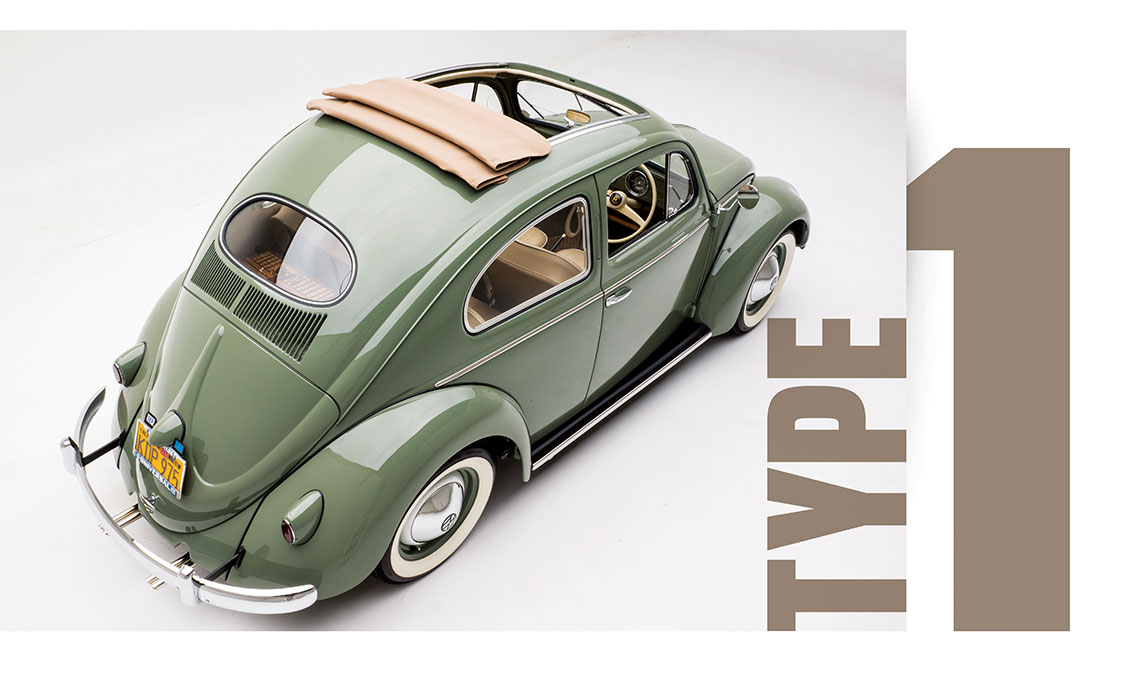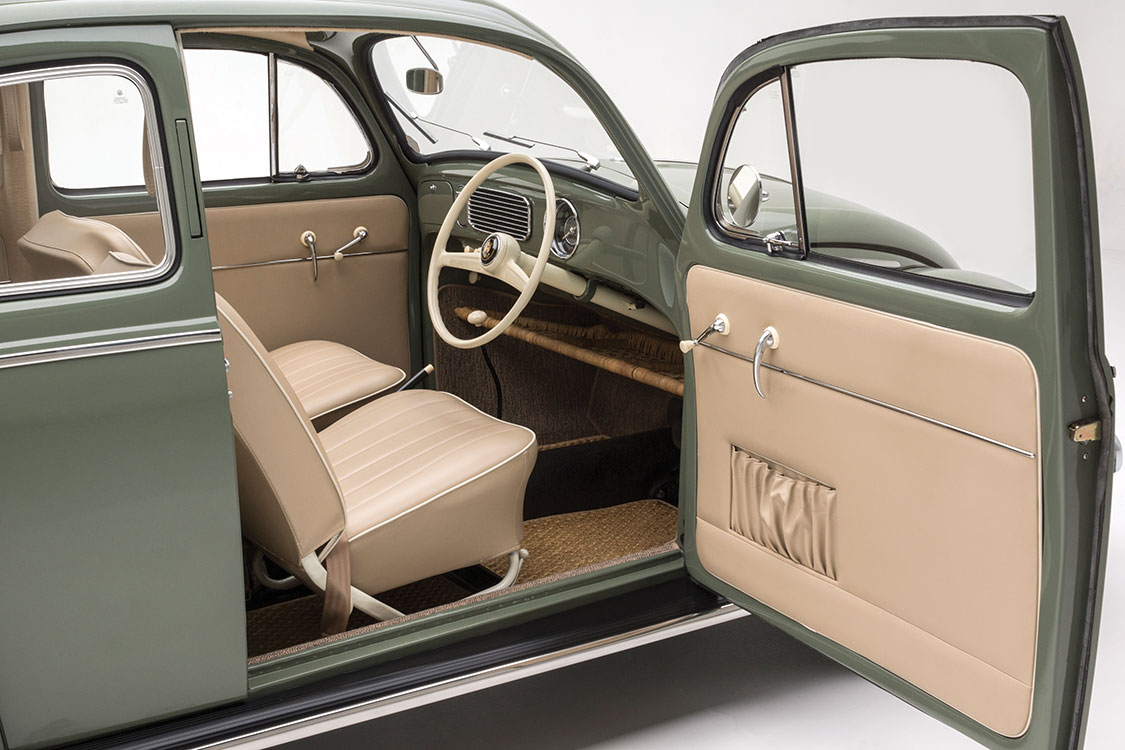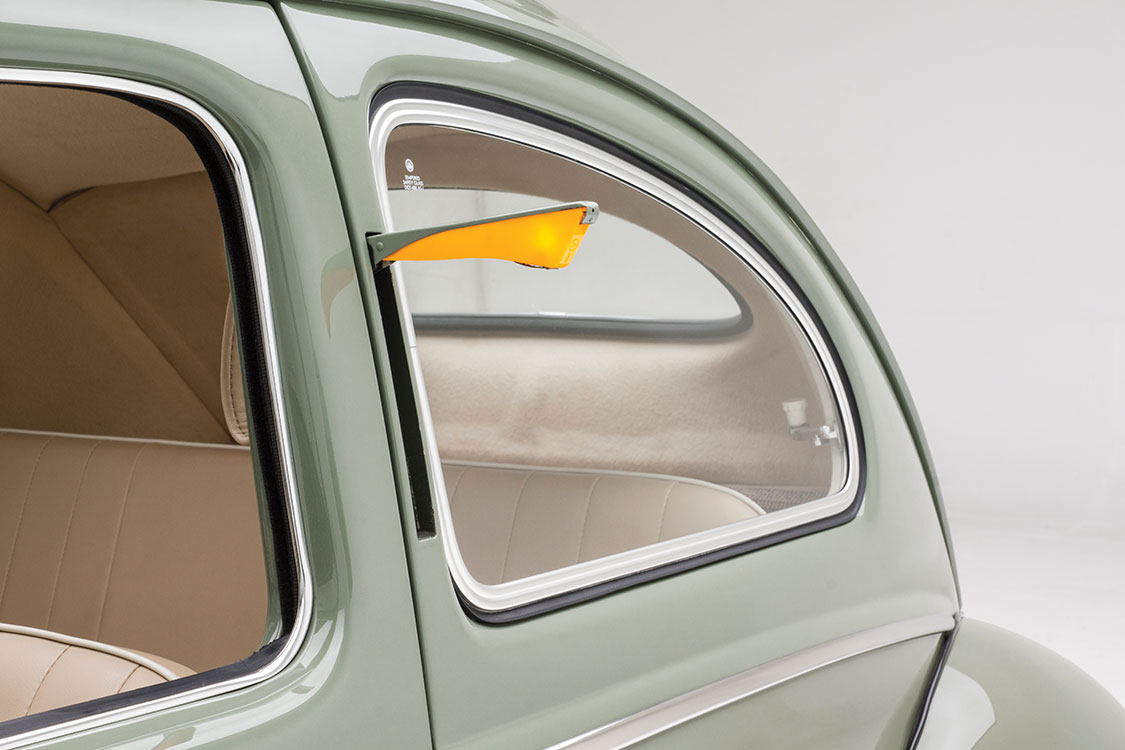 JIM SMART
.
June 25, 2021
.
All Feature Vehicles
JIM SMART
.
June 25, 2021
.
All Feature Vehicles

It can be safely said that the Volkswagen Beetle Type 1 is a more permanent part of the world’s conscious and subconscious than the Mustang or Corvette. No motor vehicle has ever been produced in greater numbers than the VW Type 1, some 21,529,464 units built and sold on all seven continents between 1938 and 2003. Every cliché imaginable has been connected with the Beetle Bug, including college students cramming as many bodies as possible inside to outlandish yard art to seeing if these cars really do float in water. If you’re an aging baby boomer who remembers heading off to college or early adulthood in one of these, you’re an honorary member of the Beetle generation.
The VW Type 1 was a wholly familiar sound in the ’60s with at least one on every block and a whole bunch of them in every neighborhood. The tweeting of their water pipe-sized twin tailpipes and their buzzy cooling fans could be heard for miles around. Because these guys were air cooled, they ran filthy rich, yielding a hydrocarbon exhaust aroma few of us will ever forget.
“The combination of green with these whitewalls and the tan ragtop are exactly what I envisioned.”
Before you is Gary Bell’s concours-restored ’57 Volkswagen Type 1 classic Beetle. Gary has immersed himself in VW Beetles for the better part of a lifetime. “My first car was a ’56 oval window VW Beetle that I customized. I shaved the moldings off, and evened off an original four-tab hood. I shaved the light housing off the ‘W’ deck lid…I ruined that car!” he lamented, “As I got older I really wanted a VW again. When I found this right-hand drive oval window, I just had to have it.” Gary comments it was hard bringing this Beetle coupe back to stock, yet he felt it necessary in order to redeem himself with the VW legacy.
The most recognized automotive shape in the world is the Volkswagen’s Type 1 Beetle. It’s impossible not to love it and what it’s meant to millions. When you think of the VW Beetle, you come up with an abundance of lifetime memories across all walks of life, most when we were young. However, the VW Beetle transcends generations. The Type 1 dates back to the mid-’30s when German Chancellor Adolf Hitler, who was also an automobile enthusiast, went to Ferdinand Porsche with his concept for an economical people’s car for the masses. He envisioned a car for Germany’s new network of autobahns. Hitler’s approach was a simple rear-drive transaxle air-cooled motor car. It took Porsche and his team to come up with a design that would endure for generations. In 1938, the Volkswagen was finalized and went into production. Although there would ultimately be more than 21 million produced throughout the following 65 years, the lion’s share wouldn’t enter production until after World War II ended in 1945.
“No motor vehicle has ever been produced in greater numbers than the VW Type 1, some 21,529,464 units built and sold on all seven continents between 1938 and 2003.”
The great success of the VW Type 1 and others to follow was its simple air-cooled pancake opposed four-cylinder engine displacing 1100cc (1.1L), which was the Beetle’s power plant from 1945-53 with a whopping 21-24 hp and 50 ft-lbs of twist. VW upped the displacement to 1,192cc (1,200) for 1954-91, which was a Volkswagen mainstay maxing out at approximately 40 hp.
In Gary’s ’57, the 1,200 was infused with some spice via Okrasa dual-port cylinder heads and Solex 32PBIC carburetors. We like the Abarth quad-tip mufflers, which eliminate the “tweet” of factory VW mufflers. We admit to feeling lust for this 1,200cc power plant because it looks sharp and it makes more power than your average Vee-Dub engine for 1957. The nimble VW pancake four was not only a power source, but a work of art that found untold numbers of places to do its work, including aircraft. This was a very rugged engine with a steel crank, cast-iron crankcase and aluminum jugs and heads. It was designed and engineered to take significant amounts of abuse and neglect. What’s more, it was easy to maintain and service.
“The name ‘Volkswagen’ is German for ‘People’s Car’ or ‘folksvagen.’ Hitler’s concept made perfect economic sense in that he envisioned an automobile that was easy to maintain and service, yet able to haul two adults with three kids in the rear seat.”
“This car has every cool thing you’d ever want in a VW,” Gary notes, “it’s got a right-hand drive, semaphore turn signals, Euro bumpers, a sliding ragtop sunroof and period-correct performance upgrades.” Gary tells us a friend of his sister’s had an early ’60s Bug in Agave Green with whitewall tires and he loved it. “Though I was into custom Bugs in those days, her VW always caught my eye,” Gary reflected, “The combination of green with these whitewalls and the tan ragtop are exactly what I envisioned.” When Gary bought his Beetle it was in rough shape and missing a lot of important parts. A large portion of his restoration project was finding all of the difficult-to-locate parts to make it right.

The name “Volkswagen” is German for “People’s Car” or “‘folksvagen.” Hitler’s concept made perfect economic sense in that he envisioned an automobile that was easy to maintain and service, yet able to haul two adults with three kids in the rear seat. It wasn’t by any means a comfortable car, yet it served a valuable purpose as economical transportation for any income bracket. It was Ferdinand Porsche who preferred a pancake four-cylinder engine. Other entries included an aircraft-style radial piston engine, which was rejected. Ultimately, Porsche’s vision for power won out and this propulsion system endured for decades until the end in 2003.
It took Gary seven years to restore his ’57 Beetle soft top. The body was stripped down to bare metal and the platform was powder coated in satin black. Then it was clad in Glasurit DTM primer and massaged to perfection. Gary laid down single-stage urethane to closely resemble the original finish. Then, he cut and buffed the Glasurit finish to a glassy shine. Sutton Konceptz in Desert Hot Springs, California, did the interior, which includes Wolfsburg West seat upholstery over new hair seat pads. Gary admits, “This restoration could have been done in a year, but I wasn’t focused on it. I’m so glad it’s finished. We love driving it all over Southern California, especially on Pacific Coast Highway, with our friends.”

Did You Know?
TEXT BY JIM SMART
PHOTOS BY RCH DESIGNS
A version of this article first appeared in the December 2014 print issue of Drive Magazine.
We use cookies to enhance your browsing experience, serve personalized ads or content, and analyze our traffic. By clicking "Accept All", you consent to our use of cookies. Visit our Cookie Policy for more info.
Notifications
Share Link